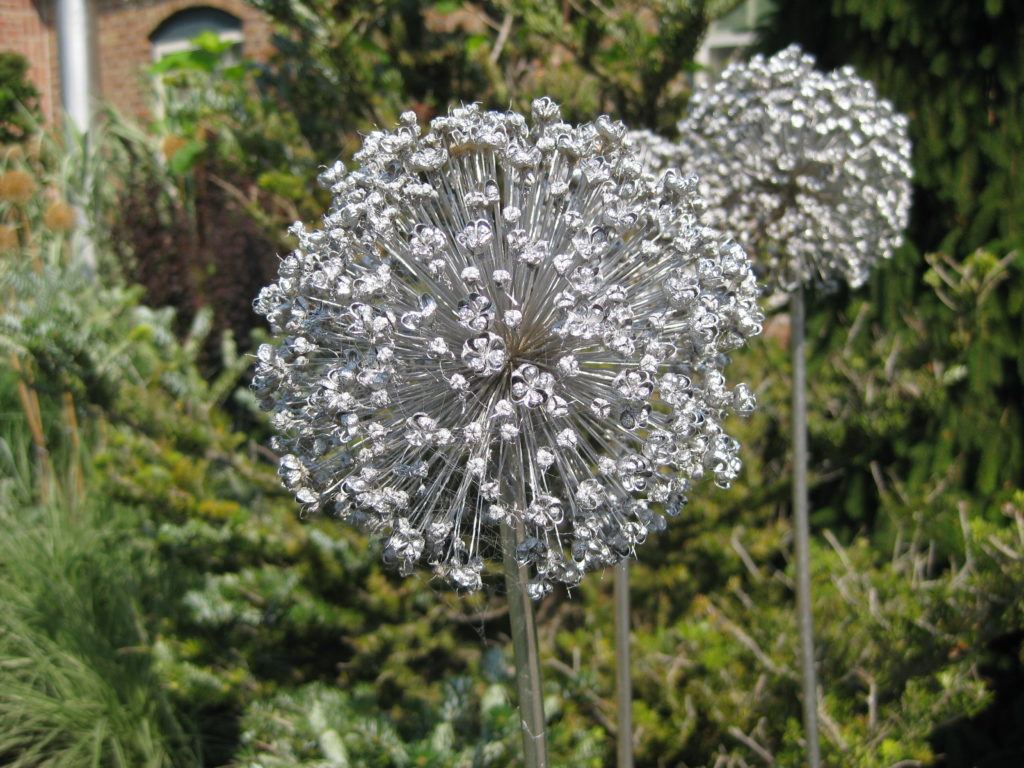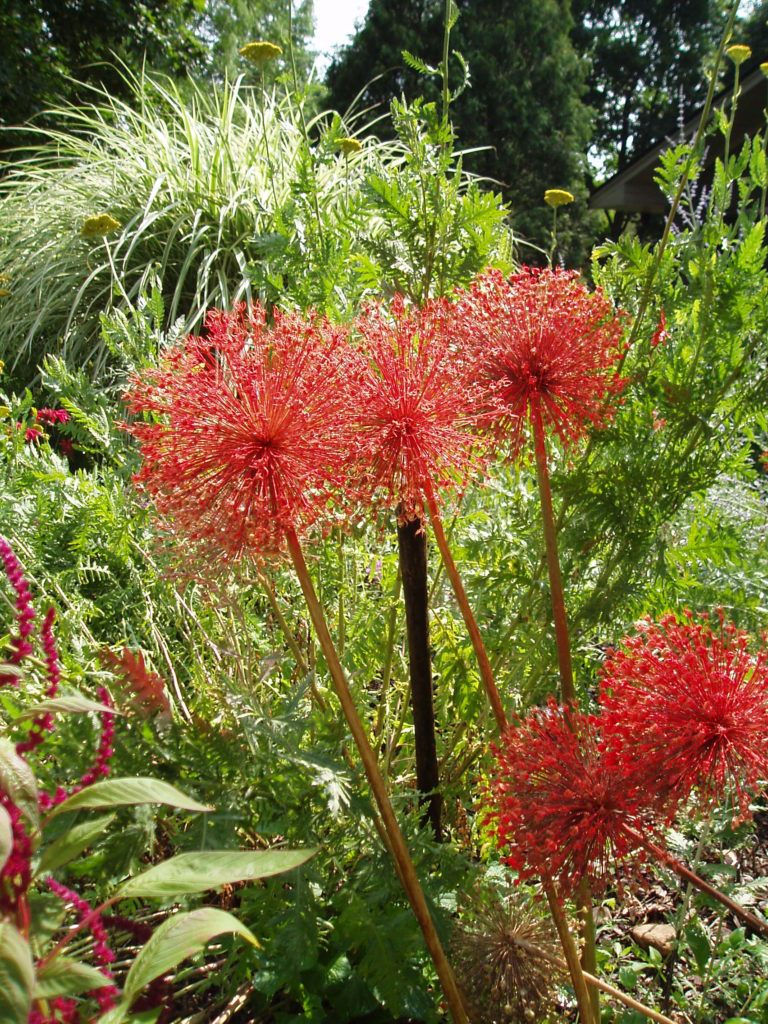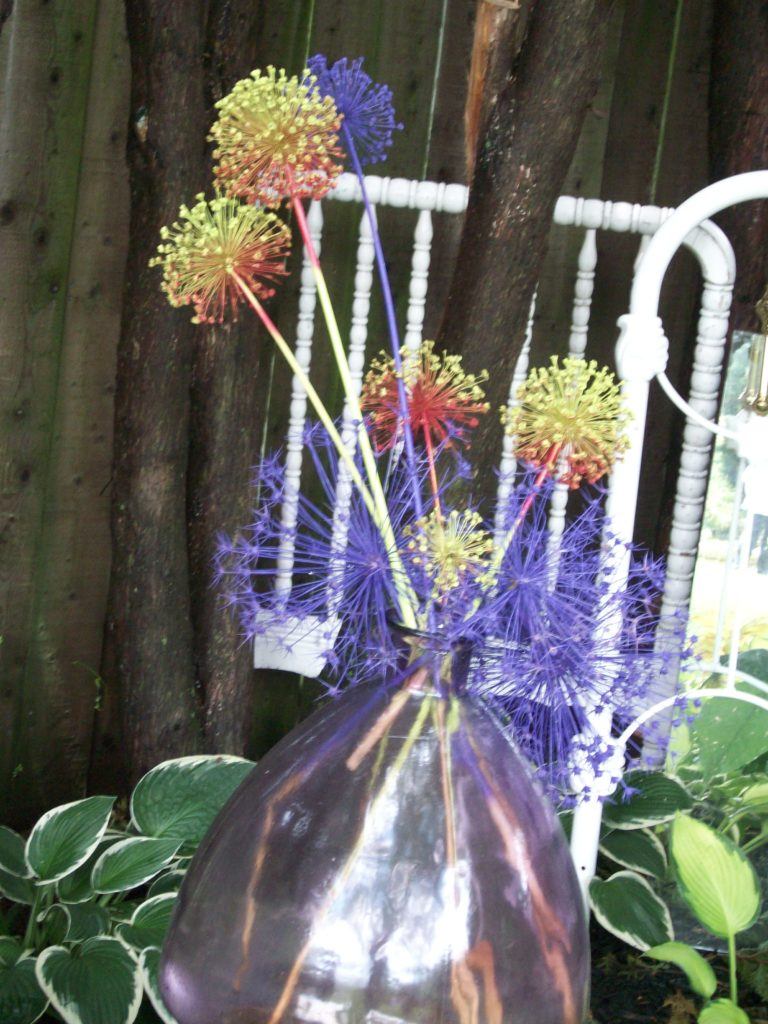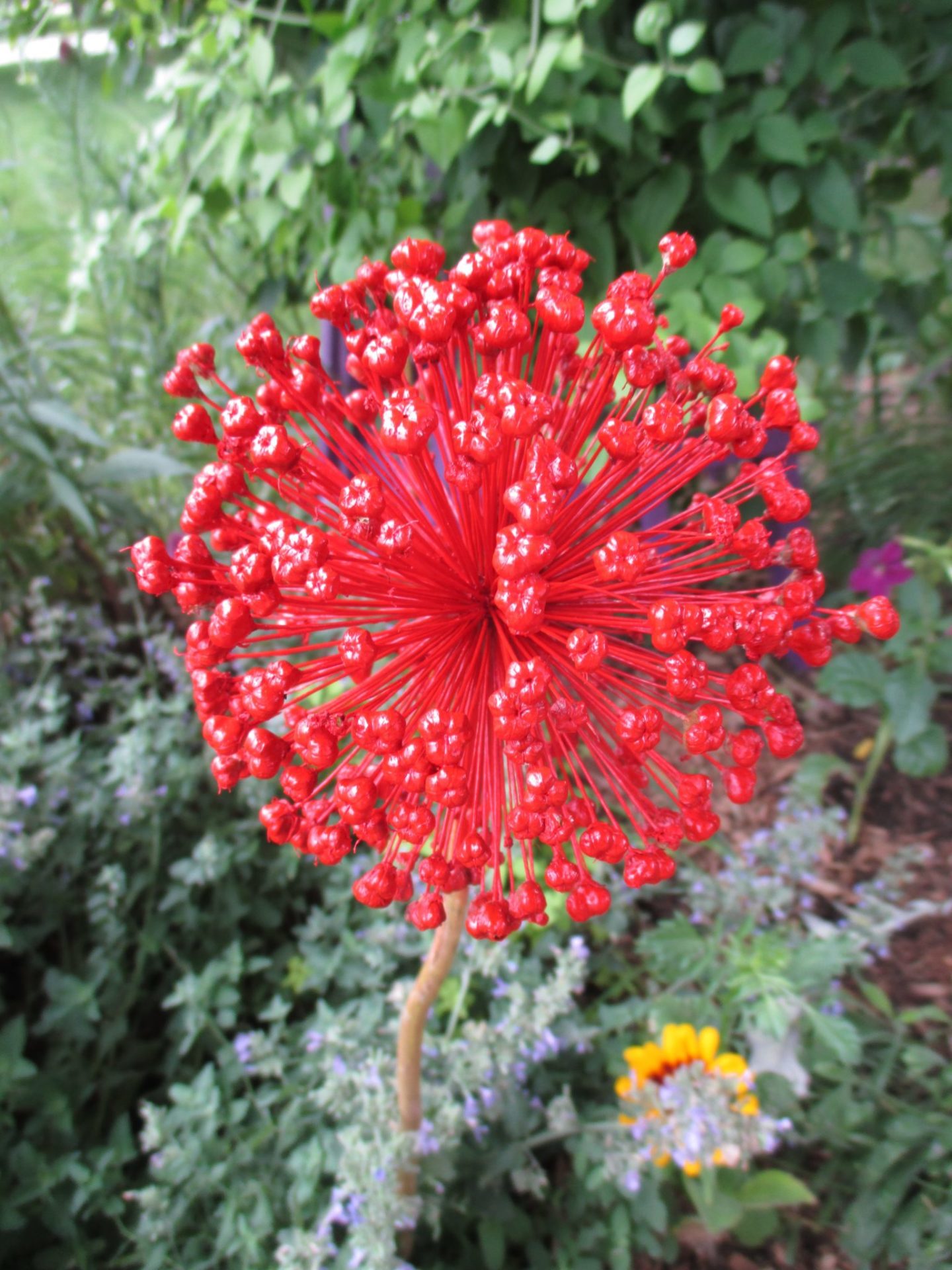
Alliums with Six Months of Color!
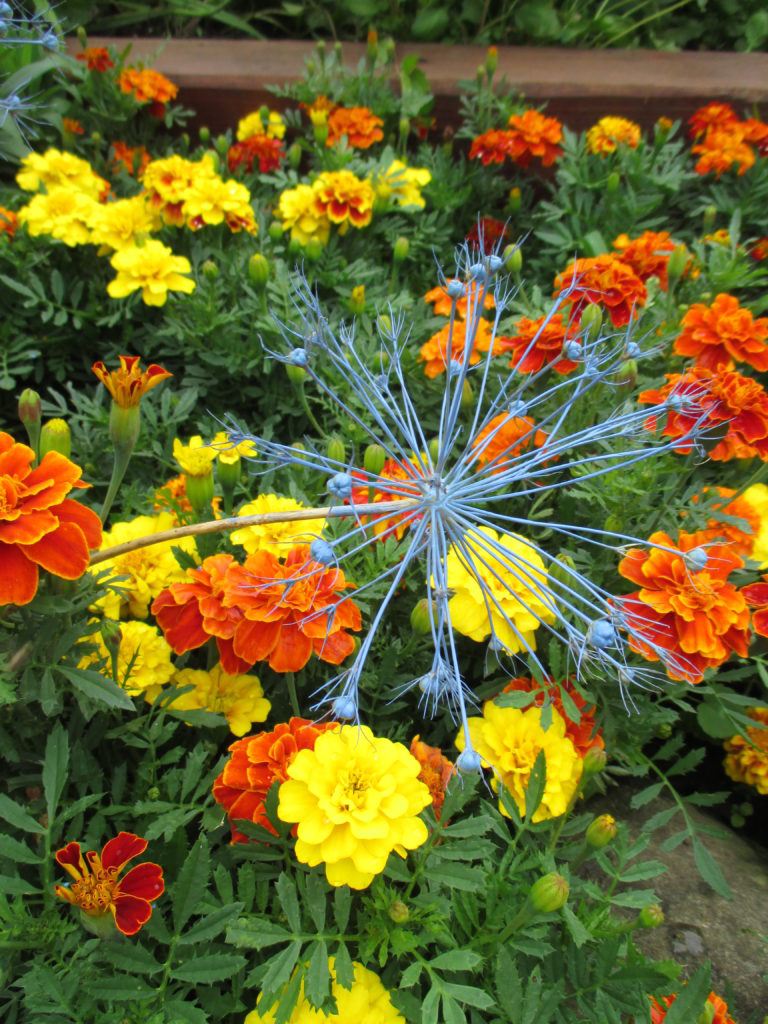
While the spring blooming ornamental onions (Allium sp.) haven’t quite yet emerged from the ground and are months away from blooming, there are some ways to extend what would normally be about three weeks of bloom time for each of these features selections.. All of the photos in this blog are summer shots with these plants being entirely dormant and featuring secondary colors. They have already bloomed, the foliage has died back and in essence, a nice coat of well directed and applied spray paint will carry the show for many more months. Most alliums have a nice rigidity and structure once dry and will withstand months more wind, rain and general garden wear and tear before deteriorating. They will last even longer used inside. During their peak bloom in spring, these fall planted ornamental onion species, all offer significant coloration and form. Why not capitalize on this visual interest with “colorful augmentation”!
Keep in mind these dried Allium selections can be spray painted in place or ultimately cut, painted and relocated to containers or arrangements (both inside and outside) for their color and structure. Taller specimens out in the gardens may benefit from additional staking. When spray painting these flower heads (and stems if desired), be sure to have some cardboard backing or something placed behind the angle of spraying to mitigate drift and excess paint shooting in to the garden or on to adjacent surfaces. Consider a protective mask, goggles, gloves and other apparel to keep you safe as well! This is not a new concept and there are many YouTube videos and website references to this approach and procedure. I always enjoy seeing this look and we have used it from time to time at the gardens. Some of the species have been identified in this blog. The photo above (blue) is Allium christophii and at the top (red) is Allium ‘Purple Sensation’.
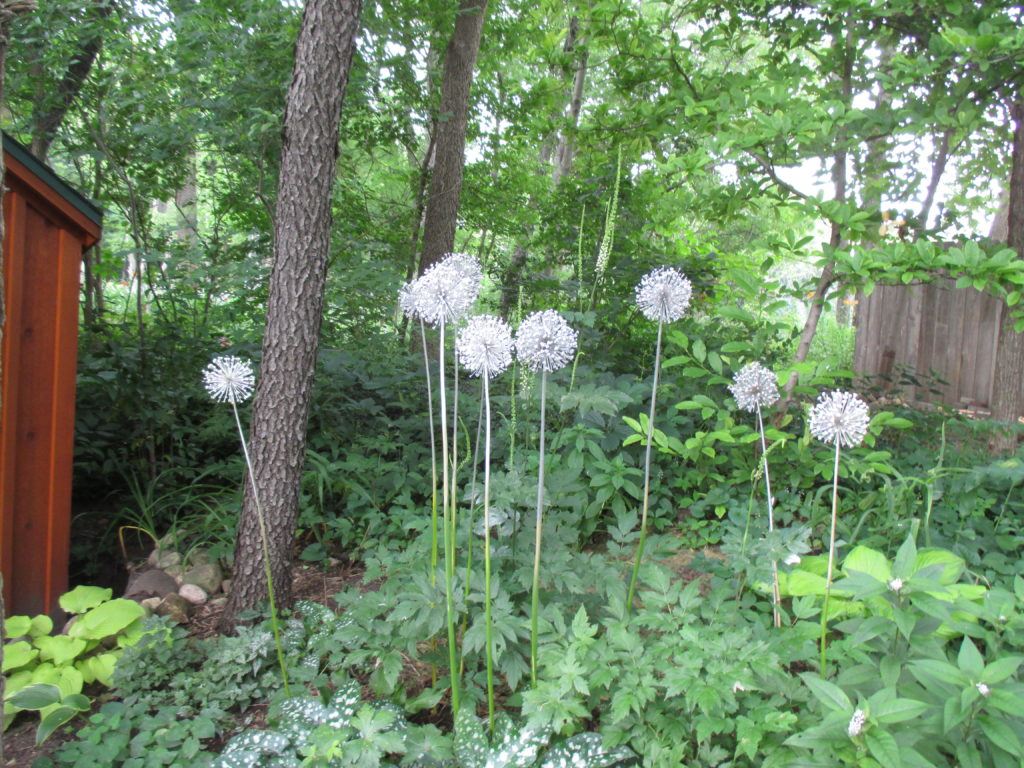

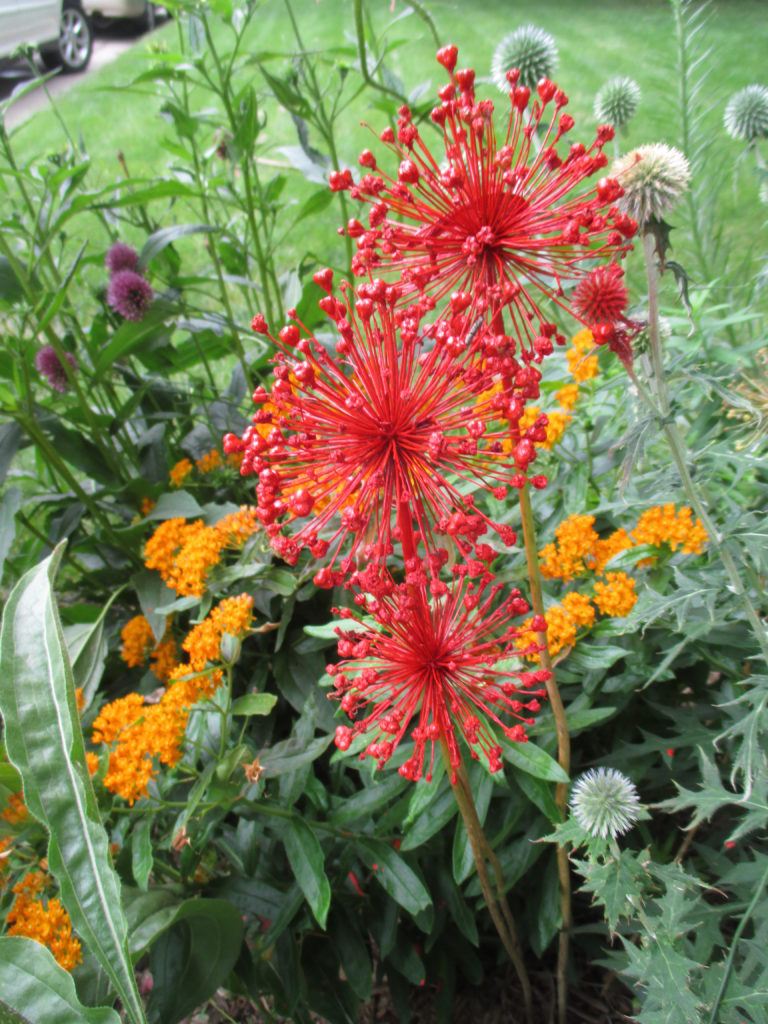

Allium ‘Purple Sensation’ (above and below)
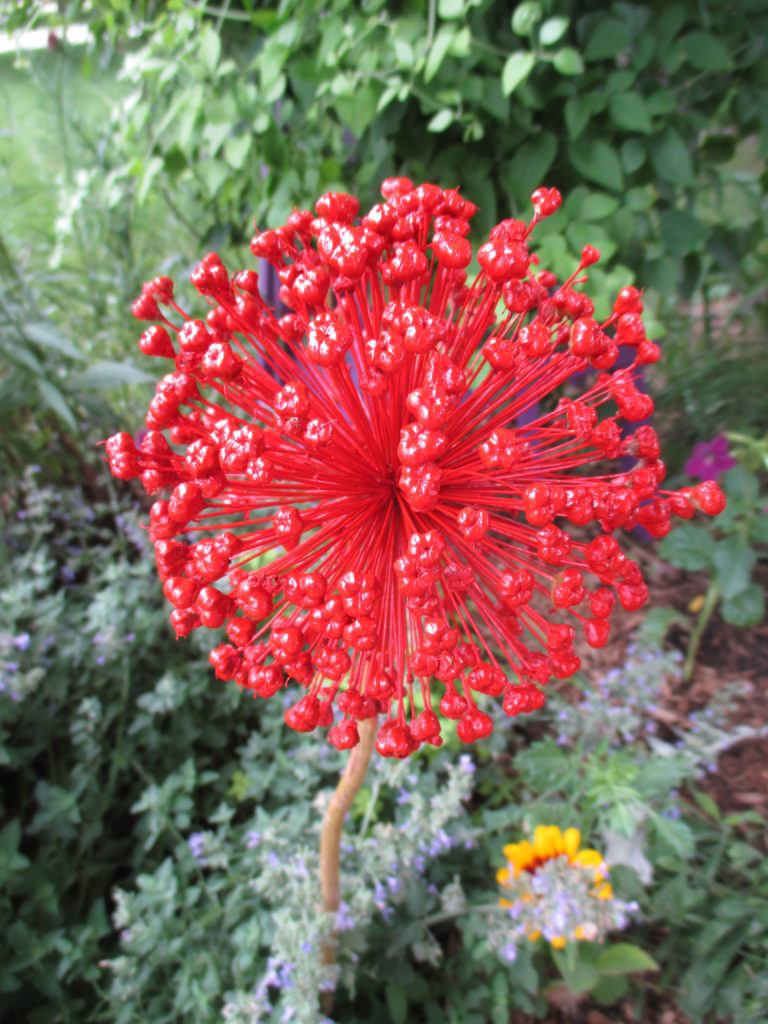

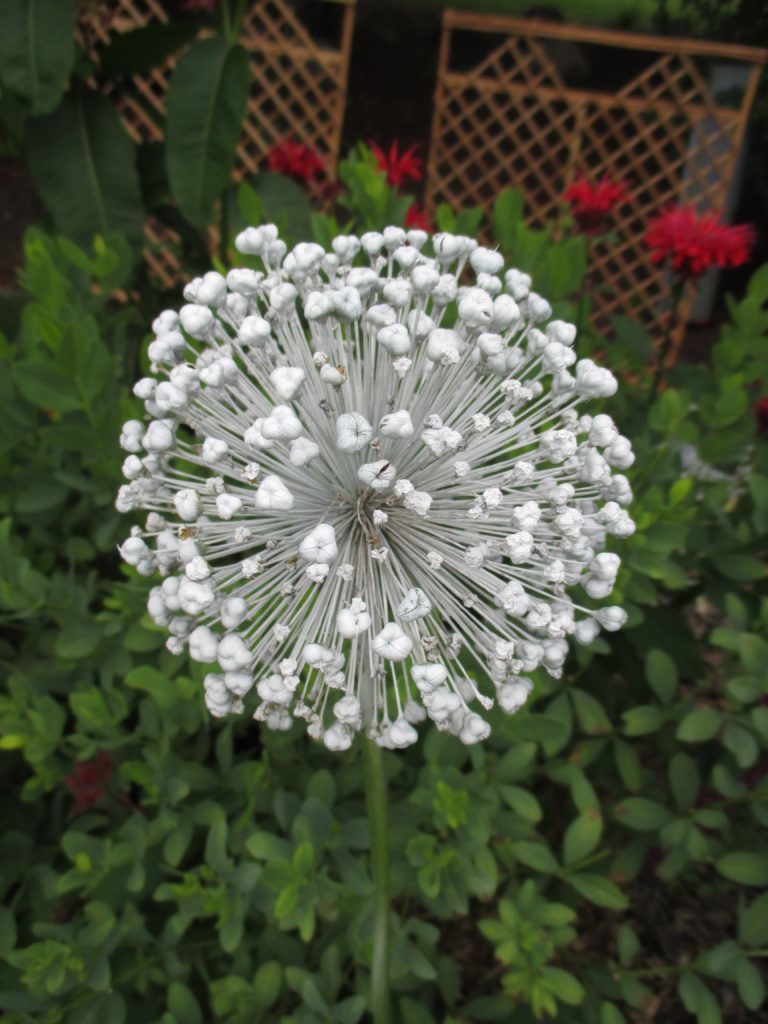

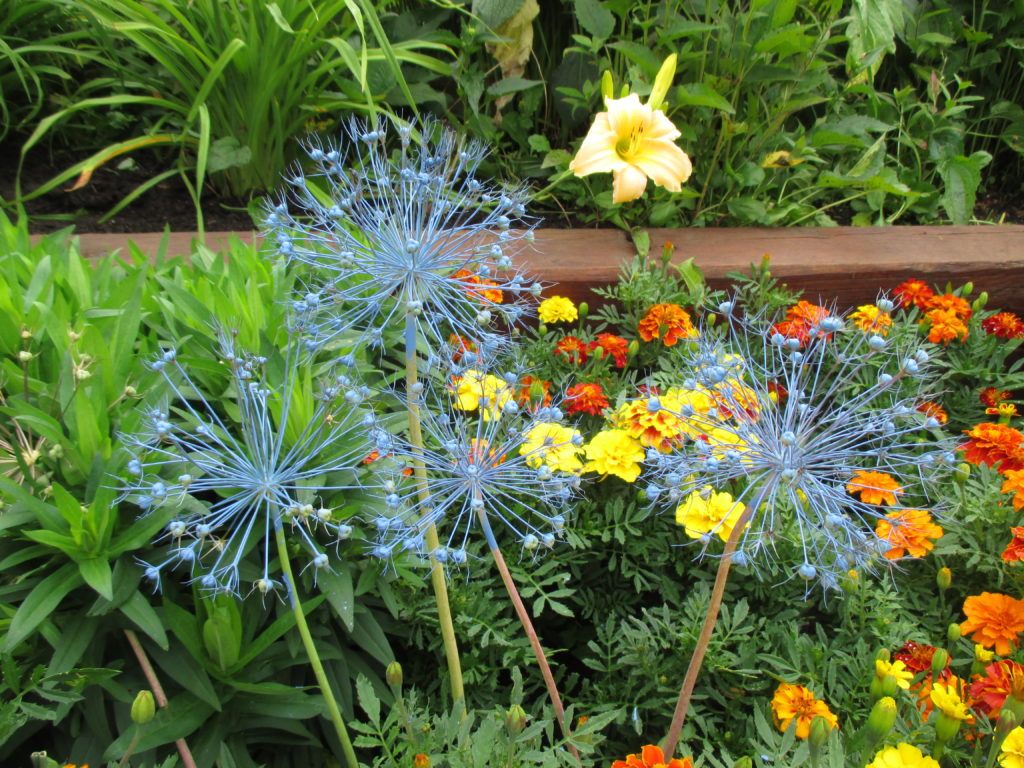

Allium christophii (above and below)



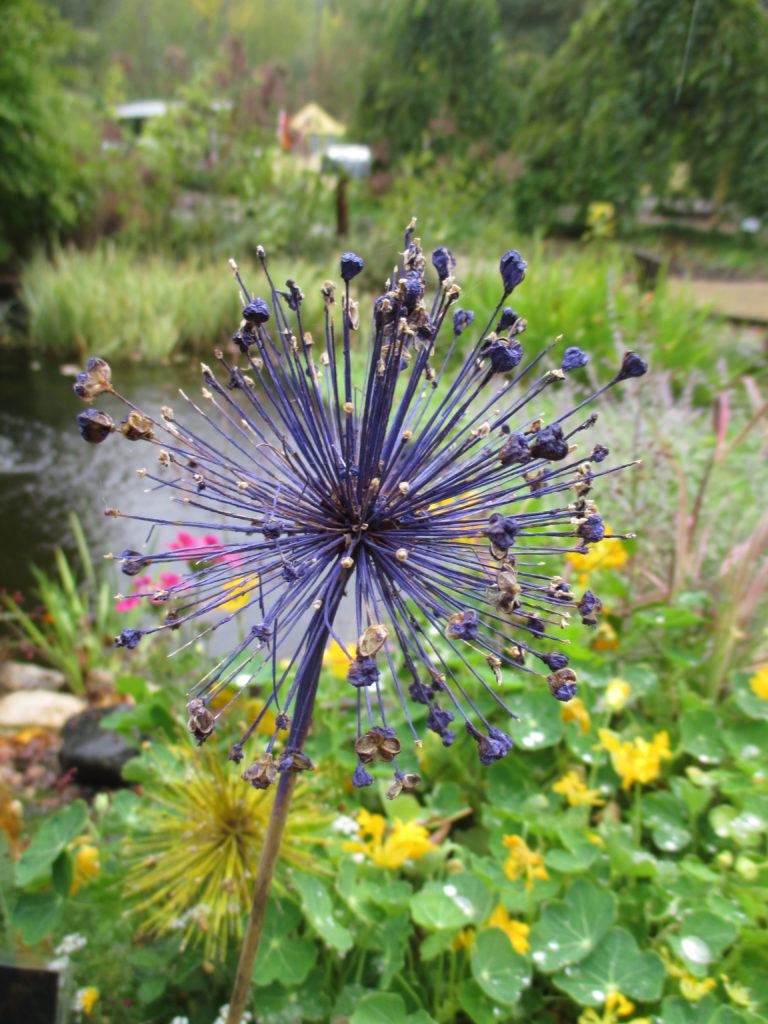

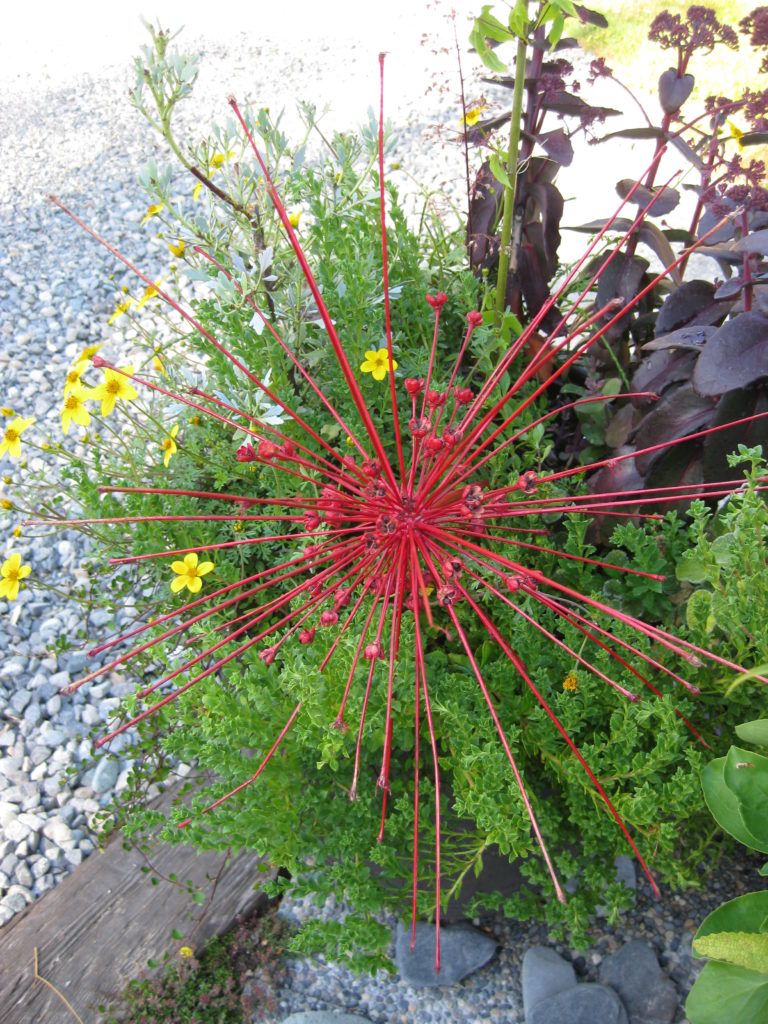

Allium schubertii (above and two below)
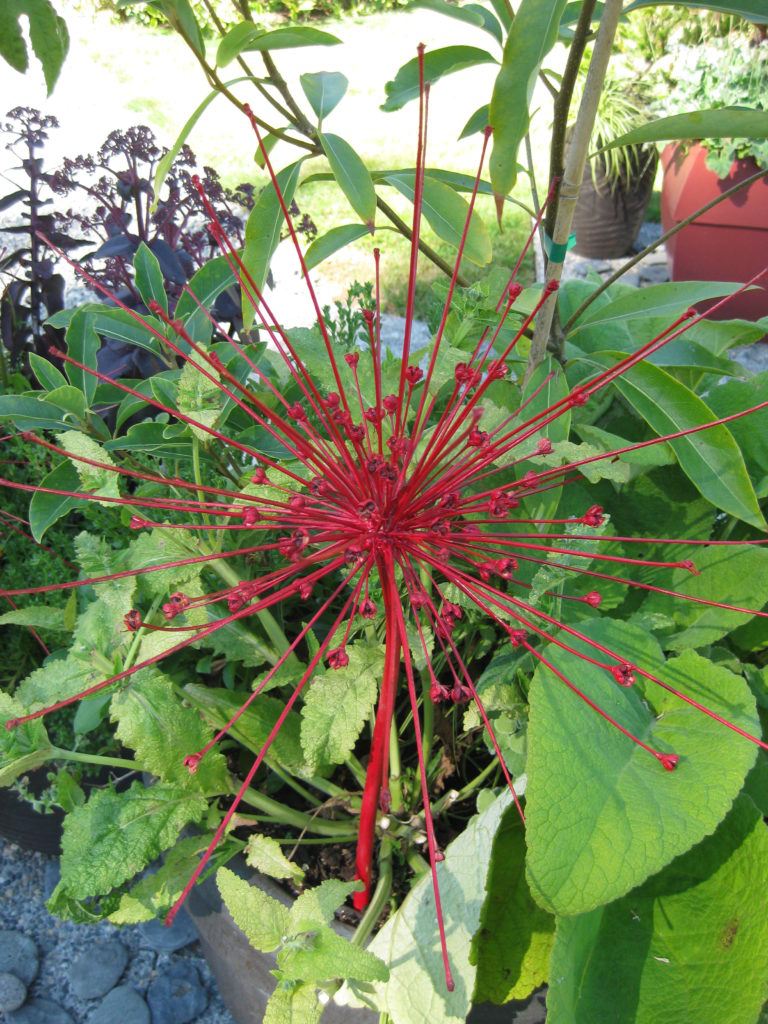

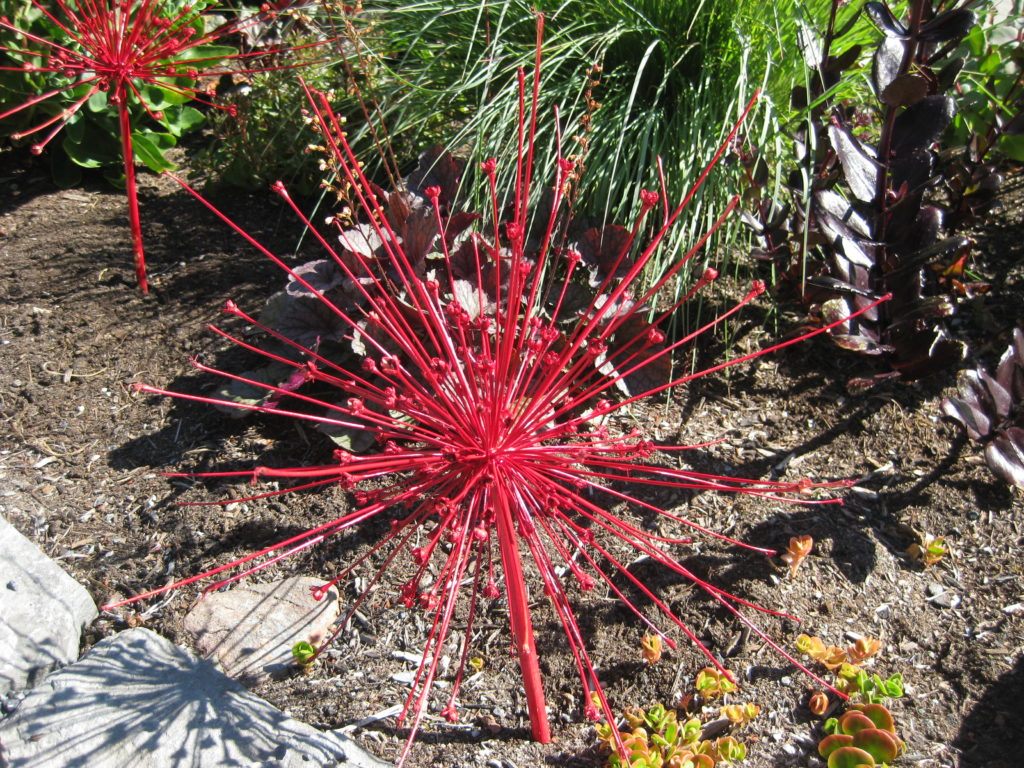

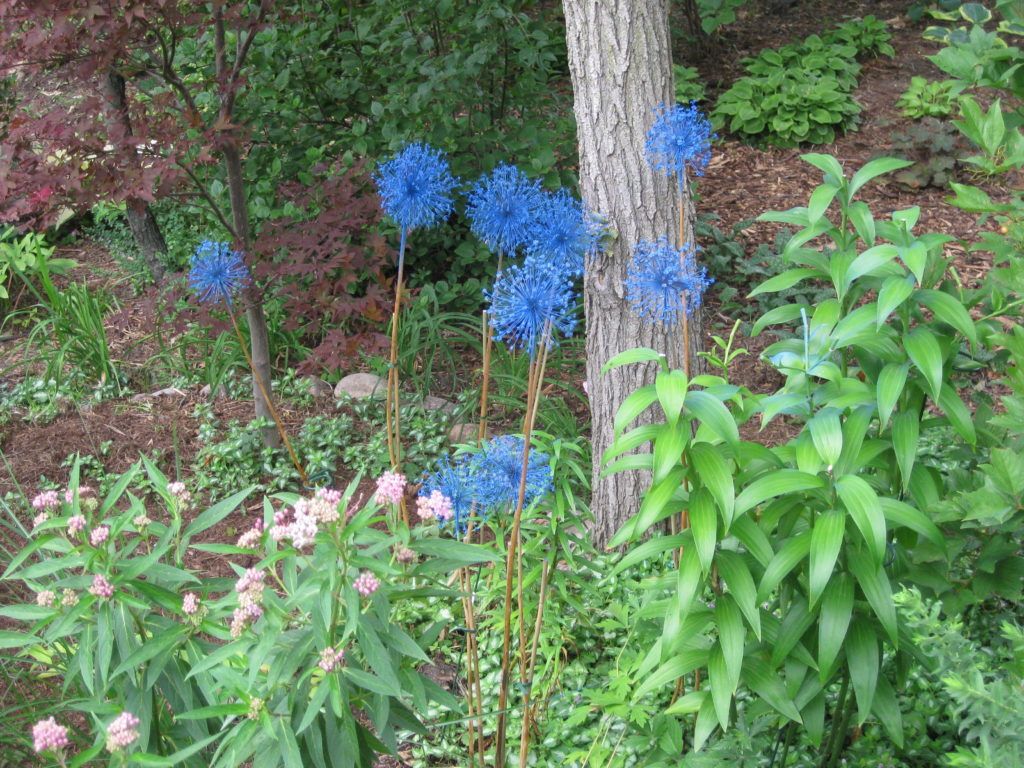

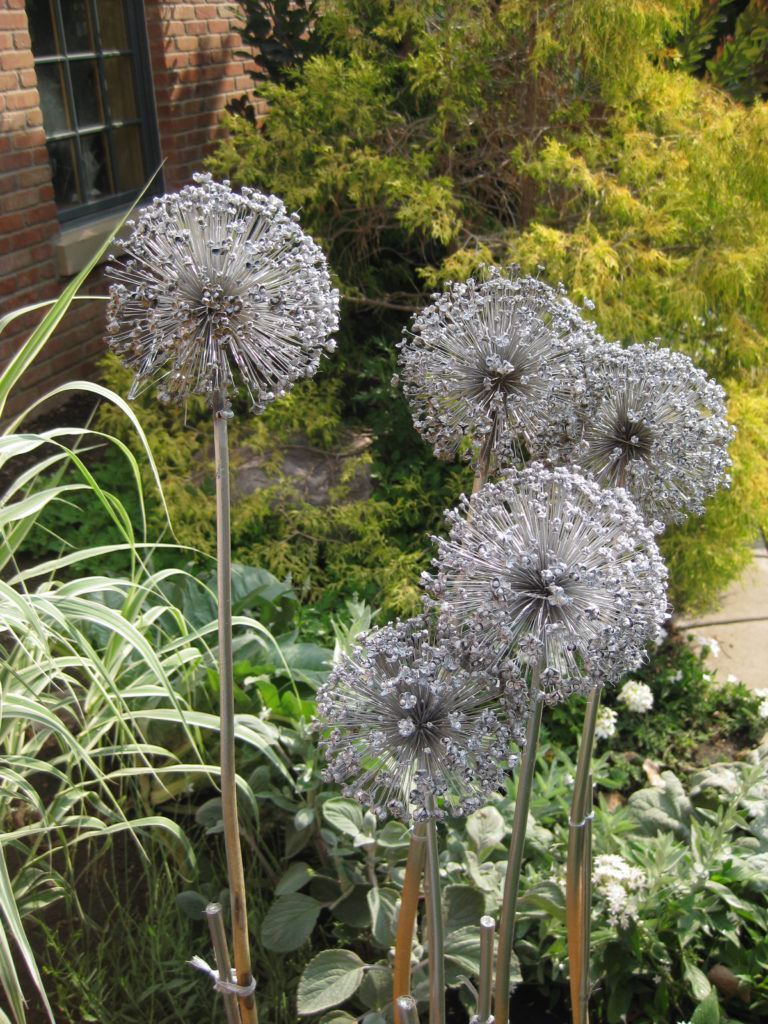

Allium ‘Mt. Everest’ (above and below)
